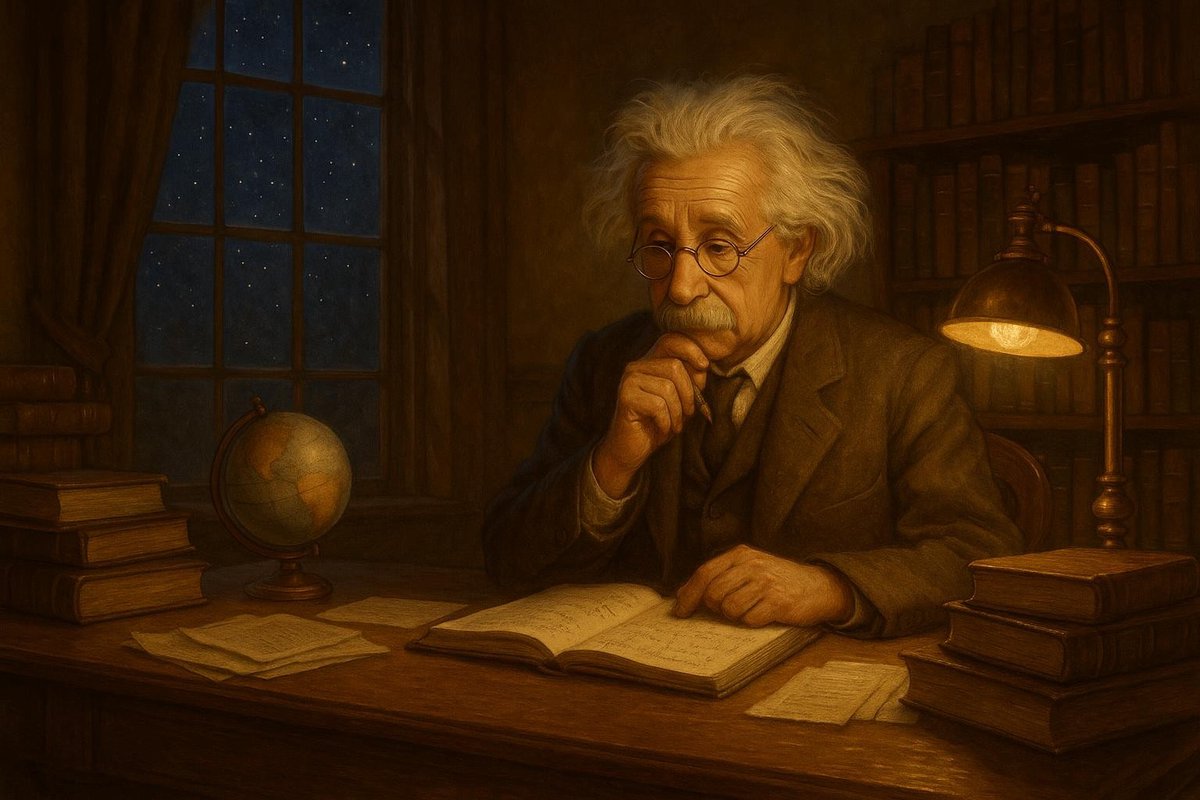
Questioning the Absolutes of Newtonian Physics
Imagine you’re on a train, smoothly gliding along the tracks. As you gaze out the window and see another train parallel to yours, it’s unclear which one is moving. This simple yet profound mystery echoes the questions Albert Einstein asked when he embarked on his quest to reframe our understanding of space and time.
- Newton’s physics viewed space and time as fixed, absolute entities.
- Einstein questioned this, speculating whether these absolutes were indeed subject to change.
- His curiosity led to one of the most transformative theories in science: the Theory of Relativity.
Interestingly, the 19th century was ripe for such questioning. Advances in technology and growing philosophical discourse created a fertile ground for challenging old paradigms, and Einstein was poised to lead the charge. His intellectual style was marked by thought experiments that dissected complex ideas into digestible concepts, leading him to question the very fabric of reality.
Theoretical Breakthrough: A New Vision of Space-Time
Einstein’s genius lay in his ability to visualize scenarios that defied conventional wisdom. He often spoke of riding alongside a beam of light, pondering what the universe would look like at light speed. As he played with these ideas, a radical conclusion emerged: space and time were not separate entities, but a single interwoven fabric.
- This new framework was revolutionary; it suggested that gravity was not a force in the traditional sense but a curvature of space-time itself.
- Einstein’s iconic equation, E=mc², revealed the interchangeability of mass and energy.
- His insights upended centuries of Newtonian physics, ushering in a new era of scientific thought.
Of course, such a paradigm shift did not occur in isolation. Scientific communities in early 20th-century Europe were vibrant with discourse and debate, providing a backdrop against which Einstein’s theories could be developed and refined. His theoretical breakthrough was not just a new way of thinking; it was a gateway to understanding the universe in previously unimaginable ways.
Supporting Evidence: The Experiments That Proved Einstein Right
The genius of Einstein’s theories was matched by the challenges they posed. How could such abstract ideas be tested? Einstein predicted that massive objects like stars could bend light, an idea that was beautifully confirmed during the solar eclipse of 1919.
- This experiment, led by Sir Arthur Eddington, demonstrated the bending of light around the sun, a natural phenomenon predicted by Einstein’s equations.
- The results catapulted Einstein to global fame, proving his theories to be more than mere speculation.
- Subsequent experiments, such as time dilation observed in atomic clocks, further cemented the theory’s validity.
No wonder Einstein’s work continues to be celebrated. His ability to predict phenomena that could be empirically verified showcased not only his theoretical prowess but also the practical applicability of his ideas. These confirmations provided the empirical backbone necessary for the scientific revolution he incited.
Modern Relevance: How Einstein’s Insights Still Shape Our World
In today’s world, the Theory of Relativity remains as relevant as ever. It plays a crucial role in technologies we rely on, such as GPS systems, which account for time dilation effects predicted by Einstein.
- The theory is foundational in cosmology, influencing our understanding of black holes and the expanding universe.
- Its principles underpin the search for a unified theory that could reconcile general relativity with quantum mechanics.
- Einstein’s work inspires ongoing research into high-energy physics and the fundamental nature of reality.
Interestingly, as time goes on, Einstein’s legacy continues to inspire not just physicists but thinkers across disciplines. His ability to challenge established norms and pursue the truth, no matter how counterintuitive, is a testament to human curiosity and intellectual pursuit. Einstein’s insights have not merely survived; they have thrived, fueling countless scientific endeavors and discoveries.
Conclusion: Reflecting on Einstein’s mindset, we find a model of intellectual courage and curiosity. His pioneering work encourages us to question the seemingly unchangeable and explore the unknown, reminding us that the universe is a vast, mysterious place, full of new insights waiting to be discovered.
Fuel Someone Else’s Curiosity: If Einstein’s journey through the cosmos of thought has sparked your curiosity, why not share this article with friends or colleagues? Engaging in discussion about his revolutionary ideas can lead to new insights and a deeper appreciation for the wonders of science. Let’s keep the spirit of discovery alive!

Leave a Reply